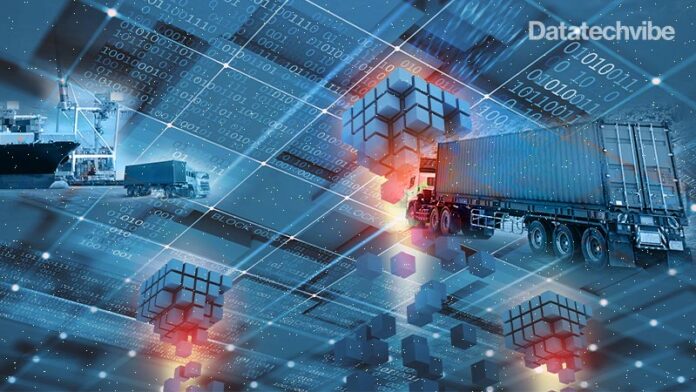AI and blockchain technology can provide deeper insights at a much higher frequency and granularity than ever
It’s not business as usual for supply chain companies. As demand shifts, the end consumer is now driving the need to rewire the supply chain. The pace of innovation in the supply chain has been hectic in the past couple of years with the surge of new technologies. The pandemic highlighted issues in supply chains, especially when a rapid response was needed. The key is to address the supply chain’s resilience and relevance through advanced analytics and powerful tools.
Today, Artificial intelligence (AI) and blockchain technology can help companies achieve next-level performance in the supply chain, providing teams with deeper insights at a much higher frequency and granularity than ever. While AI can support data matching, blockchain can securely format the architecture for capturing data between endpoints.
In the supply chain, AI solutions include demand-forecasting models, end-to-end transparency, integrated business planning, dynamic planning optimisation, and automation of the physical flow — all built on prediction models and correlation analysis.
According to reports, implementing AI solutions in the supply chain enables improvement of logistics costs by 15 per cent, inventory levels by 35 per cent, and service levels by 65 per cent.
An Accenture report found half of the leaders are investing more than $5 million in AI-embedded connected products, AI virtual assistants, advanced data analytics, intelligent automation, and AI-embedded connected products. Just under half said the same about ML/deep learning and sentiment monitoring analytics. Real-time access to supplier data can enable companies to hold suppliers accountable for where and how they’re sourcing materials, allowing brands to cut off a supplier that’s not meeting ethical or sustainable standards.
Focusing on a few key use cases, such as scenario modelling, unified demand planning and supplier risk management, is a good start to infusing AI in operations to inform every person and every decision across the business.
For example, a digital twin can serve as the foundation of a supply chain stress test, such as the one Accenture and MIT have developed. The test uses digital twin scenario modelling to assess potential operational and financial risks and impacts created by major market disruptions, disasters or other catastrophic events.
Certainly, redesigning the supply chain is a complex and costly undertaking. But it’s imperative for enterprises to have visibility across the supply chain from sourcing, securing supplies, planning for production, and order management through multiple channels.
The other side is order fulfilment through logistics by delivering the goods to customers. They need a good amount of planning for transformation, warehouse management, tracking, shipping, and optimising transportation cost, speed, and routes.
Since the supply chain is the web linking multiple functions, the goal is to minimise delays since supply chains require many companies to coordinate, creating complex systems that can be difficult to follow. Blockchain comes to the rescue to mitigate business risk and satisfy consumer expectations. By providing real-time record-keeping and the traceability of transactions – verified by several parties – blockchain can help to timely resolve disputes and ensure an efficient supply chain.
Blockchain provides real-time data for split-second decisions and actions, but it also provides parties within such supply chains with an accurate estimate of supply cycle completion, streamlines payments, and, most importantly, brings end-to-end transparency.
For instance, in the past few years, most of the diamonds sold in the world go through the Everledger blockchain so that consumers know the exact movements of their diamonds from the time they came out of the mine until they were sold to retail consumers.
Blockchain has the potential to accelerate food safety processes as well. In 2018, after an E.coli outbreak in romaine lettuce, Walmart could trace their salad products back to farms by production in seconds by using blockchain.
According to Oracle, the benefits of blockchain in the supply chain include:
- It acts as a single source of truth where parties at the beginning, middle, and end can ensure that they are in sync.
- Data is not only secure but visible to every party.
- Ledgers are unchanging, and so any issues within the chain can be easily traced back to a single point.
- Records and everyday actions are simplified, and mistakes in data are minimal.
- It makes sure updates happen quickly, resulting in the business saving more money.
Supply chain problems also have a financial effect known as trade credit contagion – firms delay payments to suppliers because their customers delay payments to them. While a high proportion of trade credit risk remains uninsured, researchers have been developing methodologies to identify supply chain vulnerabilities to understand their trade credit contagion risks.
Creating reliable trade credit that leads to fewer delays in supply chains is imperative to make the system efficient. Here AI tools and blockchain help identify the structures that could pose a systemic risk by creating simulators of global supply chains responding to shocks to detect the problematic parts of the chain.
Conclusion
But companies so far have only scratched the surface of what blockchain and AI make possible. An integrated end-to-end approach can address the opportunities and constraints for the supply chain, and AI’s ability to analyse vast amounts of data and support better decision-making makes it the most sought-after technology. However, companies must take steps to capture the full value of AI. Technology investment must be matched by organisational changes, business process updates, and upskilling efforts to capture the expected ROI. Also, adopting blockchain technology is not easy; there are some issues, such as interoperability among blockchains. Using AI and blockchain will require updated strategies and perhaps a realignment of personnel to develop, but the return is significant.
If you liked reading this, you might like our other stories









